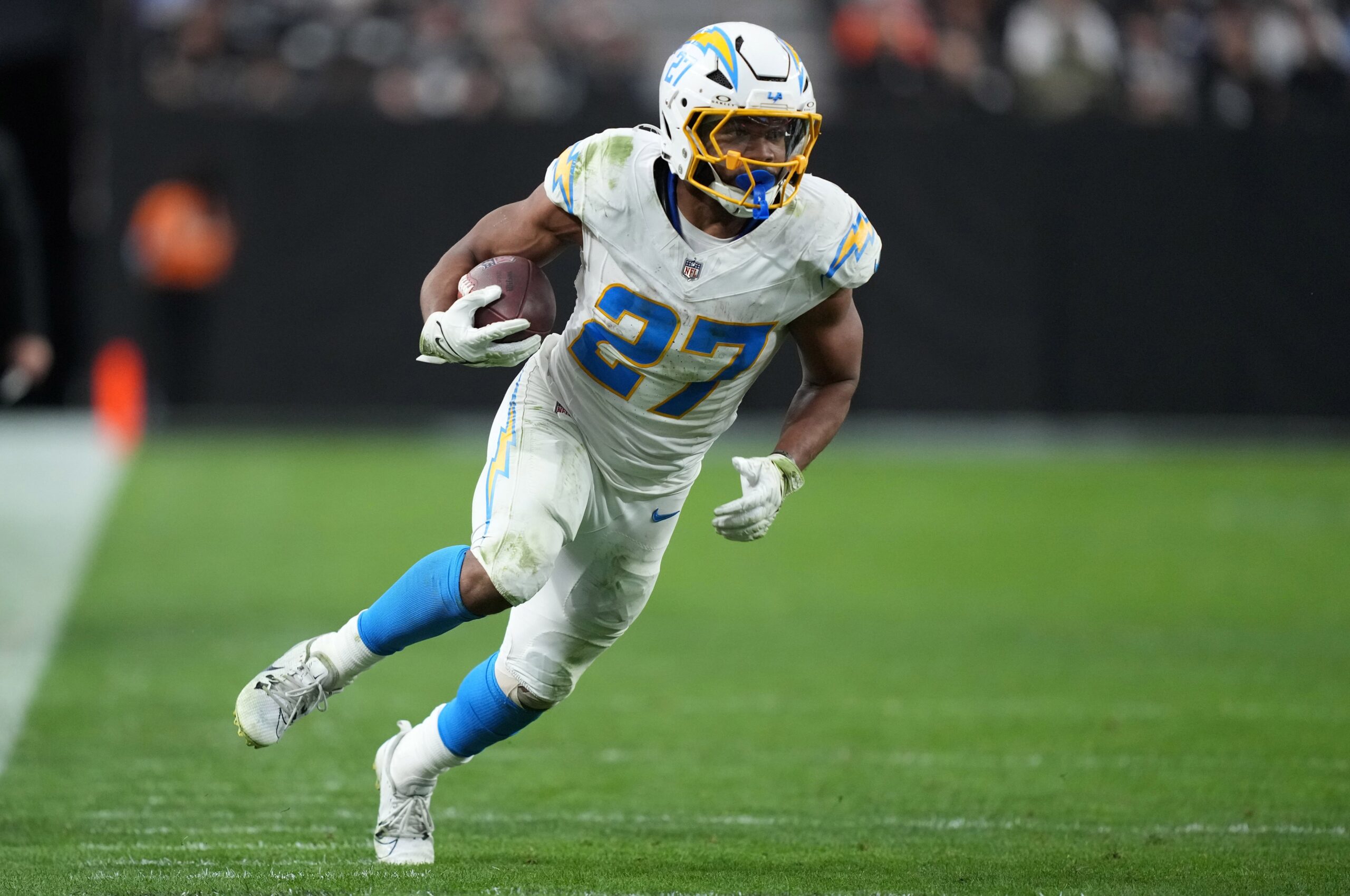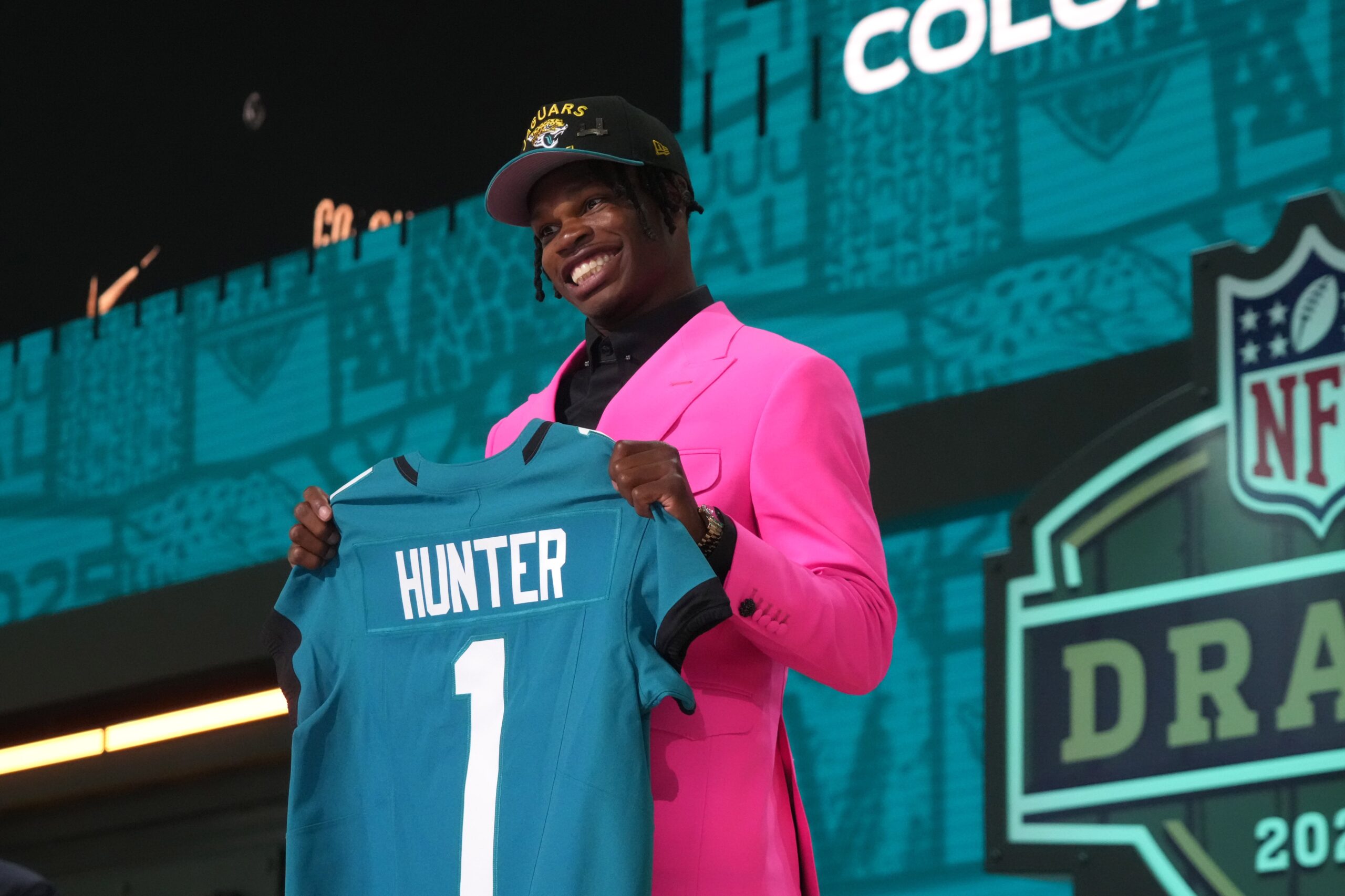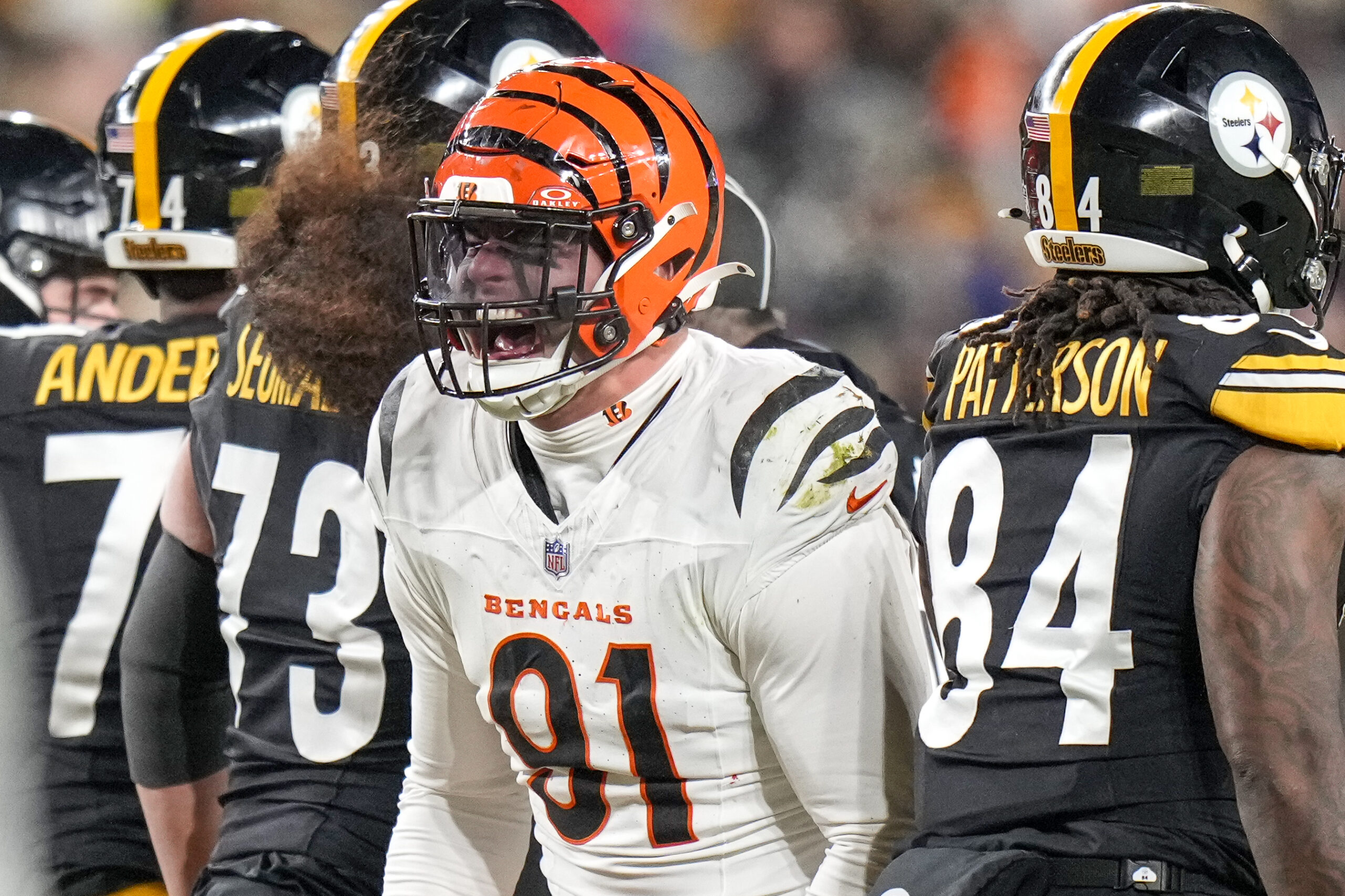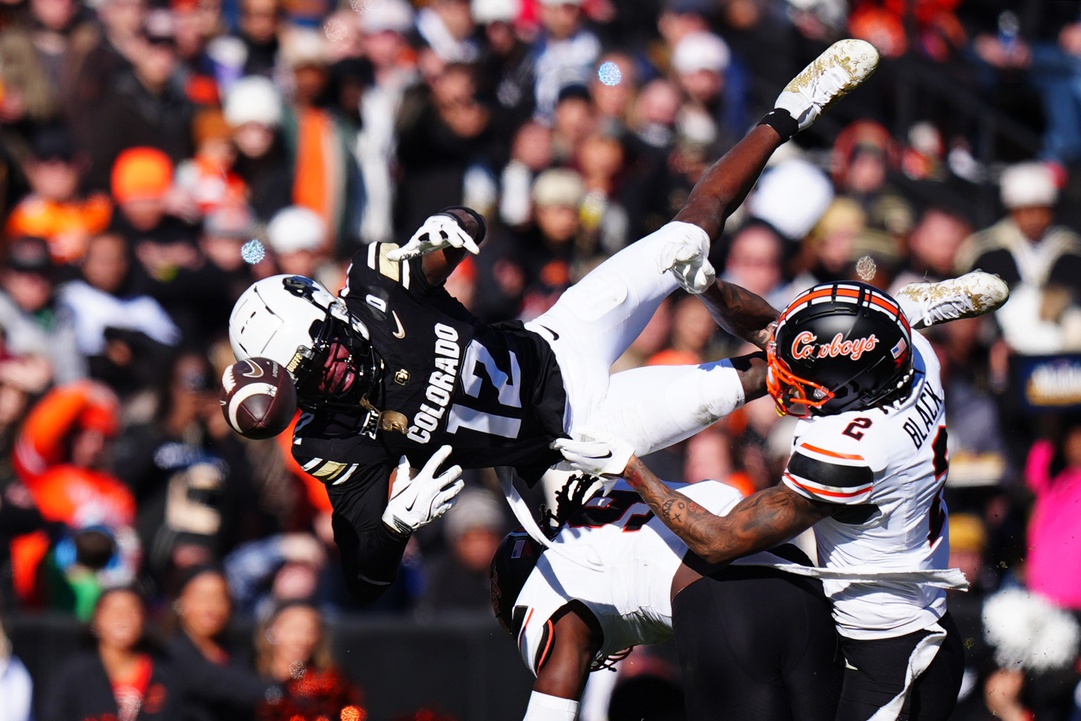NFL Analysis
1/25/24
8 min read
What Chicago Bears' Hiring Shane Waldron Says About Justin Fields-Caleb Williams Debate
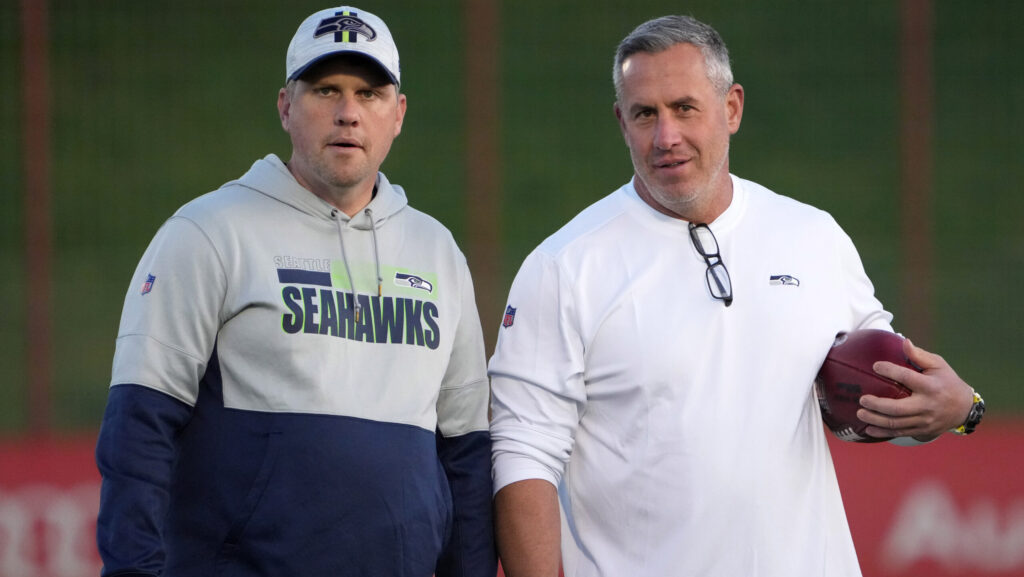
There's a new era of offensive football headed to Chicago in 2024. The Chicago Bears have over-promised and under-delivered on that side of the ball for the better part of three decades, but there's no way to get it right than to scrap it all and start over anew.
With an impending quarterback decision on the way and the No. 1 pick in hand, the Bears had better hope they nail it this time.
What Makes Waldron Different?
To jump-start this new era of offense, the Bears opted to pick from the Kyle Shanahan/Sean McVay tree again, but this time from a different branch. Former offensive coordinator Luke Getsy is out, and former Seattle Seahawks offensive coordinator Shane Waldron is in.
Getsy was a disciple under Matt LaFleur in Green Bay. Getsy was used to the under-center, boot-heavy formula this tree generally bends towards but used quick game concepts and RPOs when in shotgun.
Having Justin Fields behind center also necessitated more of a quarterback run game element, a piece of the offense that came and went throughout Getsy's two years in Chicago.
Waldron is different. At his core, Waldron still understands the under-center, run-heavy philosophy. He spent five years coaching with McVay, most of which was with the Los Angeles Rams during the Jared Goff era. But Waldron went his own way when he took the offensive coordinator job in Seattle, especially once Geno Smith became the starting quarterback in 2022.
Much like McVay when the Rams traded for Matthew Stafford, Waldron embraced true dropback passing with Smith. It's not that Smith couldn't do all the under-center stuff; rather, he didn't need it like most quarterbacks under this coaching tree do.
Smith proved right away he could consistently handle a comprehensive dropback game with spread-out formations and downfield concepts, a play style driven by Smith's processing, pocket toughness and A-tier arm talent.
Waldron adapted the offense to the quarterback, which was almost unrecognizable from other offenses in the tree.
The most distinct difference between Waldron's offense and those of his peers is the formation width. Almost all Shanahan/McVay guys love playing with condensed formations.
According to PFF's Anthony Treash, the four most condensed offenses in the league in 2023 were the 49ers, Rams, Dolphins and Texans. Even with wildly different quarterbacks, varying ability to run the ball and different skill sets at wide receiver, all of those Shanahan/McVay types wanted to play from tight formations.
Not Waldron. In fact, the Seahawks had the widest formations in the league in 2023. A receiver room devoid of players willing and able to block necessitated that change, but Smith's ability to handle an expansive dropback passing game also allowed it to work.
Accordingly, the Seahawks' 51.9 percent first-down passing rate (sixth) and 71.2 percent shotgun rate were higher than most of the other notable Shanahan/McVay types, per TruMedia.
There's a good chance Waldron only did all of that because the personnel required it, but even if that's the case, it's impressive he could deviate so far from the core principles of the offense.
He still has all the base knowledge of the offense from working under McVay while also providing some ability to adapt to what's on hand. That's quality coaching.
Chicago's QB Crossroad
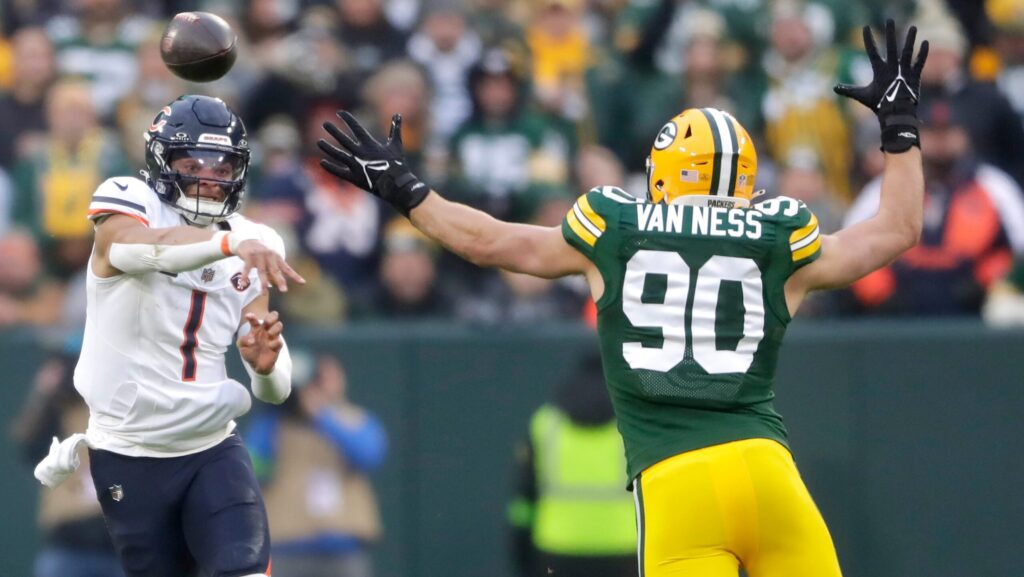
Keep Justin Fields?
The question for the Bears is how much that will sway their quarterback decision. With the No. 1 pick in hand and a half-decent, high-ceiling quarterback already on the roster, the Bears can go any direction they want based on how much or how little they want to lean into Waldron's unique standing within this coaching tree.
Fields is already on the roster so that we can start with him. The reality is no team with the first-overall pick in this quarterback class will pass on a quarterback. That doesn't have to be a dismissal of Fields' ability or a statement he will never meet his potential. It makes more sense to reset the clock with a younger quarterback with even or more significant potential.
Fields just doesn't make a whole lot of sense with Waldron's passing game, either. Some of the rollouts Waldron liked to lean on would be nice for Fields, but the emphasis on dropback passing concepts to the intermediate area of the field is a tough proposition for Fields.
We're three years into his career, and he's never shown the ability to consistently play on time and throw accurately when asked to run true dropback concepts. Fields is a far cry from the pocket passer Smith is in Seattle.
With Fields ruled out, that leaves the Bears with a decision to make with the first-overall pick: USC's Caleb Williams or North Carolina's Drake Maye.
Caleb Williams Fits Waldron
Williams is the consensus choice and certainly a good one. He is the final form of creative, loose-armed quarterback prospects that teams have been hunting for ever since Patrick Mahomes took the league by storm in 2018.
Though not as tall as Mahomes, Williams offers a lot of the same arm talent and unique vision, both as a passer and as a scrambler.
Ridiculous throw from USC QB Caleb Williams. pic.twitter.com/jk8pMdH8IH
— Russell Brown (@RussNFLDraft) January 25, 2024
What separates Williams from the other Mahomes impersonators is he's much more put together as a standard pocket passer. There's so much obsession with pinning Williams as a magician outside of structure. He is, but he's got more of a baseline on the down-to-down stuff than he gets credit for. He's not like Zach Wilson coming out of BYU.
Williams can handle all of the dropback stuff Waldron will want to do. Every area of the field is available with Williams' arm, and he isn't afraid to push the envelope.
He's probably less of a surgeon over the middle than Smith was for the Seahawks, but not so much so that everything between the numbers feels off-limits the way it does for, say, Jalen Hurts or Russell Wilson.
There will be one or two frustrating instances per game where Williams simply opts out of the structure of the play to go be Superman, but it's more of a conscious decision to create than an "oh, crap" response to him not seeing the field well.
Mahomes, Josh Allen, Lamar Jackson and Kyler Murray all had this quality early in their careers before mellowing out to some degree.
Drake Maye Has Shades of Josh Allen
Maye is a little different. Whereas Williams plays to the beat of his own drum within structure at times, Maye is more analogous to what Waldron had in Smith or what McVay has with Stafford.
Maye is a tall, rocket-armed passer who has never seen a throwing window he doesn't like. He wants to manage the pocket, throw on time and push the ball down the field aggressively.
Drake Maye mobility in the pocket, ability to avoid pressure, rolling out w the big arm to make all the throws.
— Dynasty Dad (@DynastyDadFF) January 24, 2024
Reminds me of Justin Herbert coming out of Oregon. Gonna be a steal at current 1.03/1.04 price
pic.twitter.com/m5DRFJuEAC
It's so easy to picture Maye throwing all the digs, crossers and posts with which Smith made his money.
At the same time, Maye suffers from “Josh Allen Syndrome.” For all the consternation about Williams being the insane playmaker, Maye is the one who will win or lose the game with a baffling attempt at something heroic.
Two or three times a game, after a play breaks down, Maye tries to make a play that seems inconceivable and could only be birthed by the mind of a madman. You live by it. You die by it. Opting into that lifestyle isn't for everyone, but maybe the Bears are daring enough.
No Bad Options
The Bears can't make a "wrong" choice either way. Both Williams and Maye are prospects worthy of the first overall pick.
Williams brings creativity and arm elasticity that hardly exists in any other quarterback. Maye offers the familiarity of what this offense had with Smith and the do-or-die mentality that can separate the good from the great.
Critically, both of them also make sense in this offense. They are both used to having the field spread out and operating as real-deal dropback passers.
Maybe Williams is better suited to lean more into vertical passing and RPOs, while Maye has traits more conducive to play-action success. However, both quarterbacks check all the boxes necessary to play in what we know of the Waldron offense.


